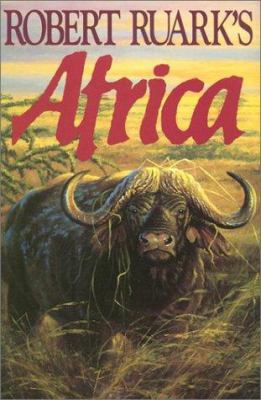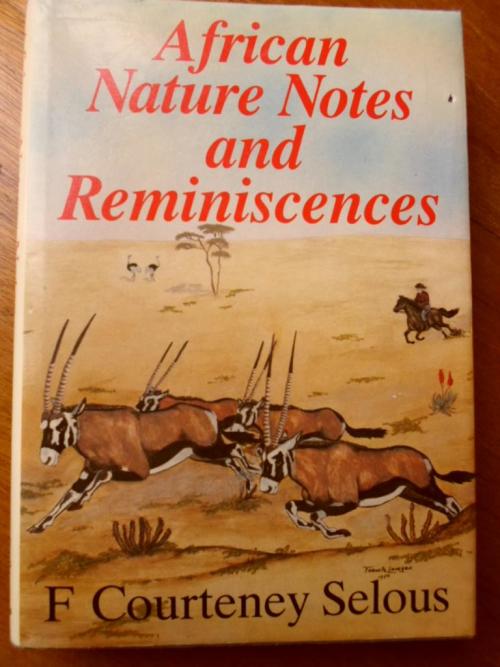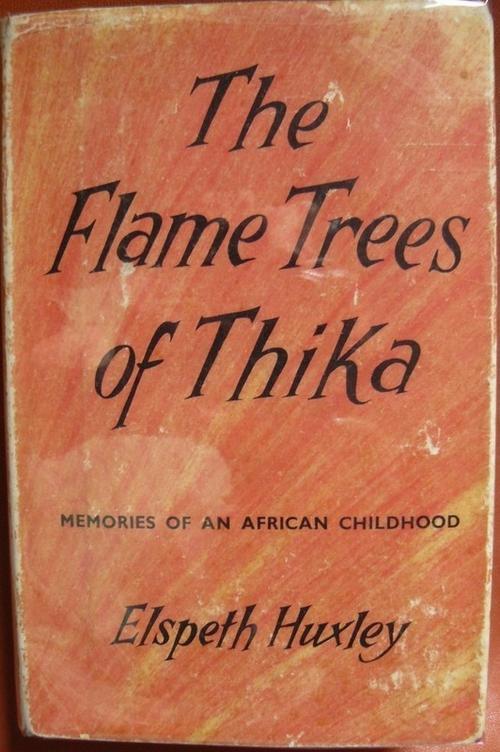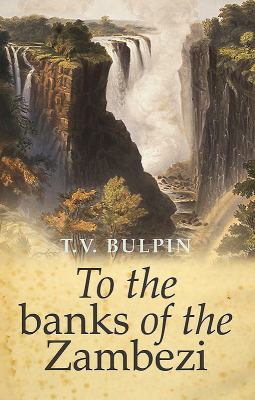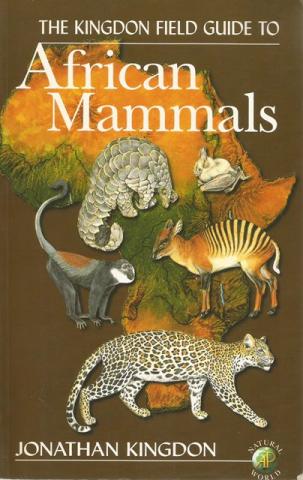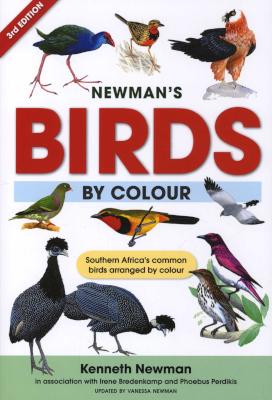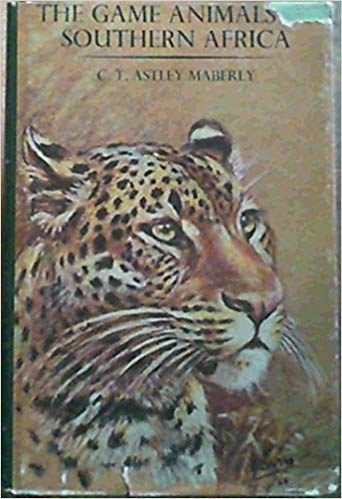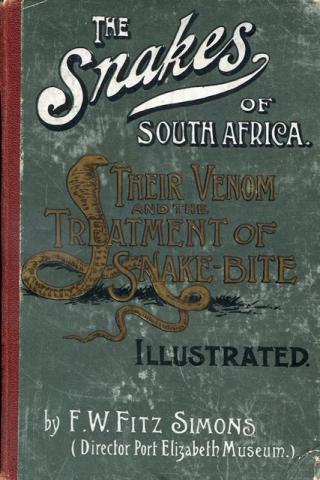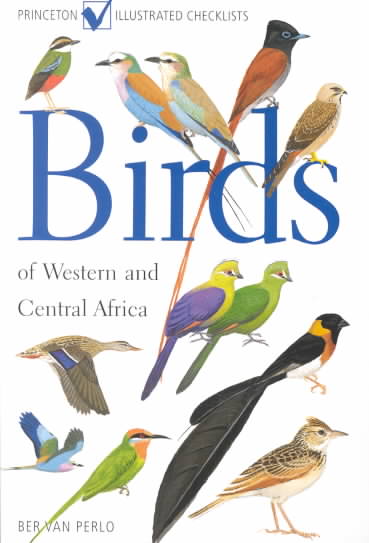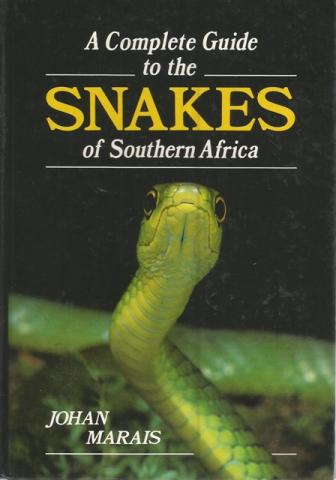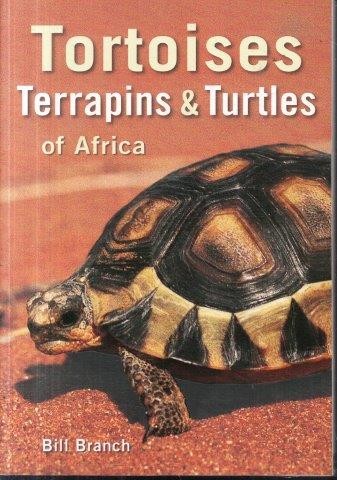A selection of authors
From hunting tales to field guides and reference bibles..
Authors
Especially in the early years, it could be argued that stories from Africa helped to create an interest in Africa and its wildlife, and in turn, fan the flames of the conservation movement still to come.
Here is a small selection of authors/writers to celebrate:
Thedore Roosevelt & F.C. Selous
Teddy Roosevelt’s African expedition (1908-10) redefined the African safari expedition and put the continent on the tourist map. His celebrity pulling power helped create an industry that has helped sustain Africa’s wildlife ever since. Theodore Roosevelt was only 50 when he chose to forego a second term of office in 1908 in favour of the world’s most lavish collecting expedition to Africa.
Read Teddy Goes on African Safari Expedition by Melissa Shales with Safari BookingsThe most famous of the 19th-century ‘great white hunters’, Frederick Courteney Selous helped make safari fashionable and lay the foundation stones of African conservation. A Hunter’s Wanderings in Africa, Selous’ account of his first few years learning his craft as a professional ivory hunter. Of all the many Europeans roaming Africa in the late 19th century, Frederick Courteney Selous was probably the one who, other than Livingstone himself, most captured the imagination of the public of the day. He is the prototypical ‘great white hunter’, the charismatic gentleman adventurer with piercing blue eyes and a trademark grey slouch hat, almost certainly the inspiration behind Rider Haggard’s fictional Allan Quatermaine (and beyond that a score of other romanticised heroes through to Indiana Jones).
Read Frederick Courteney Selous by Melissa Shales with Safari Bookings.Ernest Hemmingway, Robert Ruark, & TV Bulpin
Ernest Miller Hemingway (1899 – 1961) was an American journalist, novelist, short-story writer, and noted sportsman. In 1933, Hemingway went on safari to East Africa. The 10-week trip provided material for Green Hills of Africa, as well as for the short stories The Snows of Kilimanjaro and The Short Happy Life of Francis Macomber. The couple visited Mombasa, Nairobi, and Machakos in Kenya; then moved on to Tanganyika Territory, where they hunted in the Serengeti, around Lake Manyara, and west and southeast of present-day Tarangire National Park. Their guide was the noted "white hunter" Philip Percival who had guided Theodore Roosevelt on his 1909 safari. During these travels, Hemingway contracted amoebic dysentery that caused a prolapsed intestine, and he was evacuated by plane to Nairobi, an experience reflected in "The Snows of Kilimanjaro". On Hemingway's return to Key West in early 1934, he began work on Green Hills of Africa, which he published in 1935 to mixed reviews.
In 1951, his then latest novel, The Old Man and the Sea made Hemingway an international celebrity, and won the Pulitzer Prize in May 1952, a month before he left for his second trip to Africa. While in Africa, Hemingway was almost fatally injured in two successive plane crashes. He chartered a sightseeing flight over the Belgian Congo as a Christmas present to Mary. On their way to photograph Murchison Falls from the air, the plane struck an abandoned utility pole and "crash landed in heavy brush". Hemingway's injuries included a head wound, while Mary broke two ribs. The next day, attempting to reach medical care in Entebbe, they boarded a second plane that exploded at take-off, with Hemingway suffering burns and another concussion, this one serious enough to cause leaking of cerebral fluid. They eventually arrived in Entebbe to find reporters covering the story of Hemingway's death. He briefed the reporters and spent the next few weeks recuperating and reading his erroneous obituaries (Source: Wikipedia).Robert Ruark (1915 – 1965) was an American author, syndicated columnist, and big game hunter. After enjoying some success as a writer, Ruark decided that it was time to fulfill a lifelong dream to go on safari to Africa, fueled by his doctor's advice to have a year's rest. Legendary Ker and Downey Safaris booked him with Harry Selby, and Ruark began a love affair with Africa. Ruark was booked with Selby because of a desire to use a tracker named Kidogo, who had once hunted with Ernest Hemingway. Ruark's pairing with Selby, though fortuitous, was pure chance. Kidogo was a member of Selby's crew. As a result of this first safari, Ruark wrote a book called Horn of the Hunter, in which he detailed his hunt. Selby became an overnight legend and was subsequently booked for up to five years in advance by Americans wishing to duplicate Ruark's adventures. After the first safari, Selby and Ruark again went hunting, and this time they took cameras along. The result was a one-hour documentary entitled Africa Adventure, released by RKO pictures. Twenty stories were also published in the book Robert Ruark's Africa (Source: Wikipedia).
Thomas Victor (T. V.) Bulpin (1918–1999) was a South African writer. He wrote 29 books and over 2,000 booklets, pamphlets, newspapers, magazine features, and travel videos. He wrote about African big-game hunters as well as South African travel and history.
Peter Mathiesen (1927-2014)
Peter Matthiessen was an American novelist, naturalist and wilderness writer. A co-founder of the literary magazine 'The Paris Review', he was the only writer to have won the National Book Award in both fiction and nonfiction. He was also a prominent environmental activist (Source: Wikipedia). His books on Africa included:
The Tree Where Man Was Born: The African Experience
A timeless and majestic portrait of Africa by renowned writer Peter Matthiessen, author of the National Book Award-winning "The Snow Leopard" and the new novel "In Paradise" A finalist for the National Book Award when it was released in 1972, this vivid portrait of East Africa remains as fresh and revelatory now as on the day it was first published. Peter Matthiessen exquisitely combines nature and travel writing to portray the sights, scenes, and people he observed firsthand in several trips over the course of a dozen years. From the daily lives of wild herdsmen and the drama of predator kills to the field biologists investigating wild creatures and the anthropologists seeking humanity's origins in the rift valley, "The Tree Where Man Was Born" is a classic of journalistic observation.
Sand Rivers
The story of a remarkable trip through the Selous Game Reserve in Tanzania. Here along the glinting sand rivers, among the hills littered with stone tools, in the endless miombo woodlands, are the lion and antelope, the hippos, elephants, crocodiles, rhinos, and dazzling birds that are the glory of the African landscape (taken from the Introduction). The book contains fascinating wildlife photography by Hugo Van Lawick accompanied by the inimitable prose of Peter Matthiessen.
African Silences
African Silences is a spellbinding journey through Africa’s ravaged wildernesses. In 1978 and again in 1986, Matthiessen travelled through Senegal, Gambia, the Ivory Coast, Zaire and the Central African Republic to examine the fate of West African wildlife. African Silences is a powerful and sobering account of the cataclysmic depredation of the African landscape and its wildlife. In this critically acclaimed work Peter Matthiessen explores new terrain on a continent he has written about in two previous books, A Tree Where Man Was Born -- nominated for the National Book Award -- and Sand Rivers. Through his eyes we see elephants, white rhinos, gorillas, and other endangered creatures of the wild. We share the drama of the journeys themselves, including a hazardous crossing of the continent in a light plane. And along the way, we learn of the human lives oppressed by bankrupt political regimes and economies, and threatened by the slow ecological catastrophe to which they have only begun to awaken.
Ian McCallum, Ian Michler & Scott Ramsay
Ian McCallum is a medical doctor, analytical psychologist and psychiatrist. He is a specialist wilderness guide, an author and poet as well as a director of the Wilderness Foundation. He is the author of two anthologies of wilderness poems: Wild Gifts (1999), Untamed (2012) and a novel Thorns to Kilimanjaro (2000). His award winning book Ecological Intelligence – Rediscovering Ourselves in Nature (2005) addresses the interconnectedness of all living things and ultimately, the survival of the human animal. It won the Wild Literary Award at the World Wilderness Congress in Mexico in 2009.
Ian Michler has spent recent years working as a specialist guide, photo-journalist and consultant across Africa, including a stint of 13 years based in the Okavango Delta, Botswana. When not guiding, he writes predominately for Africa Geographic covering topics on conservation, wildlife management, ecotourism, and the environment, and has been writing his popular monthly column since 2001. Ian is also the author and photographer of seven natural history and travel books on Africa, and is a past winner of the bird category in the Agfa Wildlife photographic competition (1997). He has also worked as a researcher and field coordinator on various natural history television documentaries for international broadcasters and as a consultant on ecotourism to various private sector and government agencies.
Scott Ramsay is a photographer, author and adventurer in Africa’s national parks and wilderness areas. He tells the stories of these places, so that you too can be inspired to stand up – and speak up – for Africa’s incomparable wildlife and wilderness.
STORIES OF INTEREST:
Conservation articles by Ian Michler (Conservation Action Trust)
Wilderness - A Poem by Ian McCallum
Three Years in the Wild by Scott Ramsay 2014 (PDF)
The core of the continent by Scott Ramsay 2018 (PDF)
After three years I find myself even more determined to make others aware of Africa’s natural treasures. My journey started out as a dream, an adventure, but it has become my vocation. I’m sure that if other people – especially those in business and government – can see for themselves what I have seen, then they too will be inspired to care more for the few pockets of wilderness that remain. - Scott Ramsay, Three Years Wild.Elspeth Huxley & Wilfred Thesiger
Elspeth Huxley, who died in 1997, is chiefly remembered for her lyrical and evocative memoir The Flame Trees of Thika (1959). Yet this was only one of the thirty non fiction books she wrote (together with 10 fiction stories), taking only a few months of her remarkably active life to compose. A woman of compelling personality and exceptional energy, Elspeth Huxley was not only a celebrated writer, but also a farmer, broadcaster (during the Second World War, Huxley was a broadcaster for the BBC), journalist, conservationist, political thinker, magistrate, and government adviser receiving an OBE (Commander of the Order of the British Empire) in 1962.
Sir Wilfred Patrick Thesiger KBE, DSO, FRAS, FRSL, FRGS (1910 – 2003) was a British military officer, explorer, and writer. Thesiger was born in Addis Ababa, Ethiopia. In 1930 Thesiger returned to Africa, having received a personal invitation from Emperor Haile Selassie to attend his coronation. He returned again in 1933 as the leader of an expedition, funded in part by the Royal Geographical Society, to explore the course of the Awash River. During this expedition, he became one of the first Europeans to enter the Aussa Sultanate and visit Lake Abbe. After the Second World War, Thesiger travelled across Arabia, lived for some years in the marshes of Iraq, and then travelled in Iran, Kurdistan, French West Africa and Pakistan. He lived for many years in northern Kenya. Although he is mostly remembered for his Arabian expeditions, he wrote a popular story about his life in Kenya in My Kenya Days 1994 (Source: Wikipedia).
Reference book authors
What bird is that? Are they nocturnal? Where do you find such and such? Where would we be without our handy fieild guides and reference books, from canids to avians...we would be lost without them.
We are blessed with a vast array of enlightening and informative reference books compiled, and updated, by a vast assortment of species experts and passionate enthusiasts. It would be impossible to feature them all here, but recognising their contribution to the conservation of wildlife and habitats is important in so many ways; only with knowledge can we grow our understanding and passion for the natural world.
C.T. Astley-Maberley - game animalsC. T. (Charles Thomas) Astley Maberly wrote & illustrated a number of early reference books, including The Game Animals of Southern Africa (1963) and Animals of East Africa (1966), and illustrated a number of books by the well-known author of the day, TV Bulpin, as well as Memories of a Game Ranger (1966) by Harry Wolhuter, and edited and illustrated Okavango Adventure - Memoirs of a Game Ranger (1971) by E Cronje Wilmot.
Coates Palgrave - trees
Olive Hannibal Coates Palgrave (5 April 1889 - August 1963) was a South African botanical illustrator, noted for her richly illustrated 1956 book "Trees of Central Africa". In 1915 she married Sidney Heneage Coates Palgrave, a Rhodesian civil servant. They raised a family of three sons, Roderic (Deric)(1917), Keith (1926) and Paul (1929), all of whom regularly joined in excursions to the bush. Her son Keith Coates Palgrave published Trees of Southern Africa in 1977, a work which filled a need for a comprehensive reference work compact enough to be used as a field guide. Keith's brother Paul, and Paul's wife, Meg, provided the photographs used in the book with Meg Coates Palgrave continuing the legacy of updating and publishing this wonderful book.
FitzSimmons & Johan Marais - snakes (and reptiles)
Covering topics such as snake identification, distribution, habitat, behaviour, diet and breeding habits of species, venom and basic first aid measures.
Richard Estes, Smithers, Kingdon, Peter Apps & Clive Walker - mammals
From elephant experts to mammal identification and behaviors. Invaluable.
Richard Despard Estes (born 1928) is a biologist specialising in the behaviour of mammals in mainland Africa. He is particularly interested in studying wildebeest. This interest led Rod East, the former co-chair of the Antelope Specialist Group of the IUCN-World Conservation Union, to dub him the 'Guru of Gnu'. It has been suggested that Estes is responsible for most of the world's knowledge of wildebeest behaviour. Estes chose to study wildebeest because he thought they were 'the most interesting' animals he knew, particularly in their rutting behaviour. He obtained his doctorate in the early 1960s with a thesis on the wildebeest of the Ngorongoro Crater, in which he advanced the theory that the females' estrus was triggered by the rumbling 'love call' of the males. Estes has spent most of the ensuing 40 years doing field work in Africa. Estes has written two guides for travellers to Africa, The Behavior Guide to African Mammals (considered the standard reference of its kind) and The Safari Companion. Source: Wikipedia
Jonathan Kingdon, one of the foremost authorities on African mammals, has written and illustrated many world known books. One of the most recognized is his famous field guide which sets new standards in African mammalogy - an essential companion to all visiting Africa or with an interest in the mammals of the continent. His most recent activity is the compilation of a part-edited, part-self-authored handbook on the Mammals of Africa. Initiated by J. Kingdon and now completed, this work consists of six volumes, approx. 4000pp and has been about ten years in preparation. “The Mammals of Africa” is a large-scale collaborative enterprise involving two fellow editors, three associate editors and some 350 authors drawn from a wide range of scientific disciplines. Another noteworthy publication: Island Africa: The Evolution of Africa's Rare Animals and Plants is a fascinating and in-depth look at the continents evolutionary pathway from this extremely knowledgable evoltionary biologist - a must read.
Peter Apps began his studies of animal behaviour at the University of Oxford before moving to South Africa in 1979. He has worked from England to Antarctica on species ranging from insects to elephants. His special interests are the behaviour of small carnivores and the role of chemical communication in mammal social behaviour. He works as Senior Researcher at the Paul G Allen Family Foundation Laboratory for Wildlife Chemistry in Botswana. He is the editor of Smithers’ Mammals of Southern Africa: A Field Guide, and has also written numerous scientific papers and magazine articles but is perhaps best known for Wild Ways: a field guide to the behaviour of southern African mammals..
Clive Walker has changed the face of conservation in South Africa and devoted his life to the preservation of its wildlife and natural heritage. Walker’s career has seen him as a game ranger, writer, and a leading force in environmental education and conservation. As a wildlife artist he has used his art to raise tens of thousands of Rands for conservation projects. His many books Above Africa: Aerial Photography, Signs of the wild: A field guide, African Elephants, Savuti: The Vanishing River, Okavango from the Air, Larger Carnivores of the African Savanna, Twilight of the Giants, The Ring Fence, and The Rhino Keepers are all well regarded (Source: Jacana Books). His autobiographic book is called Baobab Trails. He is the founder of the Endangered Wildlife Trust in 1973 and The Waterberg Nature Conservancy in 1989, Clive Walker is also co-founder of the 36 000 ha Lapalala Wilderness in the Waterberg. He is currently associated with the Waterberg Living Museum, a non-profit non-governmental organisation presently involved in the development of a new museum, a living component, botanical garden, art gallery and archives.
John Voelcker, Philip Hockey, Kenneth Newman - Roberts Birds of Southern Africa
Roberts Birds of Southern Africa - In December 1935 the South African Bird Book Fund was formed to fund a complete and up-to-date new bird book for southern Africa under the authorship of Austin Roberts, and illustrated by Norman C.K. Lighton. The successful and popular first edition, titled The Birds of South Africa, was published on 8 June 1940. The affairs of the fund were handled by the secretary, John Voelcker, who became chairman after the untimely death of Austin Roberts in 1948. He, together with the other Trustees of the John Voelcker Bird Book Fund, became the driving force that ensured that the original edition was revised and updated.
Philip Hockey died on 24 January 2013 - his story can be found on the Obituary page.
Kenneth Newman played a pivotal role in the popularisation of bird watching in South Africa through the publication of numerous books, which have sold nearly a million copies. His ability to capture the alure of birds in his illustrations have made his field guides an essential companion for so many birders. His abilities extended to painting and lecturing and his commitment to ornithology and conservation was reflected through his presidency of both the South African Ornithological Society and BirdLife South Africa. He was still President of BirdLife Sandton at the time of his death. Ken was the first non-scientist recipient of the prestigious Gill Memorial Medal. In May 2006, Kenneth Newman's life-long contribution to birding and conservation were recognised by his being awarded a BirdLife South Africa Owl Award (Source: SANParks).
Terry Stevensen & John Fanshawe (East Africa) + Geoff Lockwood, Peter Ginn, Leonard Gill, Ian Sinclair, Warwick Tarboton and Peter Ryan (southern Africa) - birds
Everything you could ever want to know about the birds of Africa, their habits, nests and eggs.
Peter Steyn, Lesley Brown, Johann Knobel - birds of prey
The avian rulers of the skies..
Veronica Roodt & Trevor Carnaby (field guides)
Trees, shrubs, grasses and wildflowers of the Okavango Delta (Vernica Roodt), mammals and birds (Beat about the bush - Trevor Carnaby).
